“WTF is that?!”, exclaimed my pairs partner when I rolled up to the 10@kirroughtree endurance race late last summer. I thought he was talking about my newly acquired beer belly, the result of six months of no racing or training, and lots of drinking and eating. But no, he was talking about the Intense Primer 29 Pro I’d brought with me to ride.
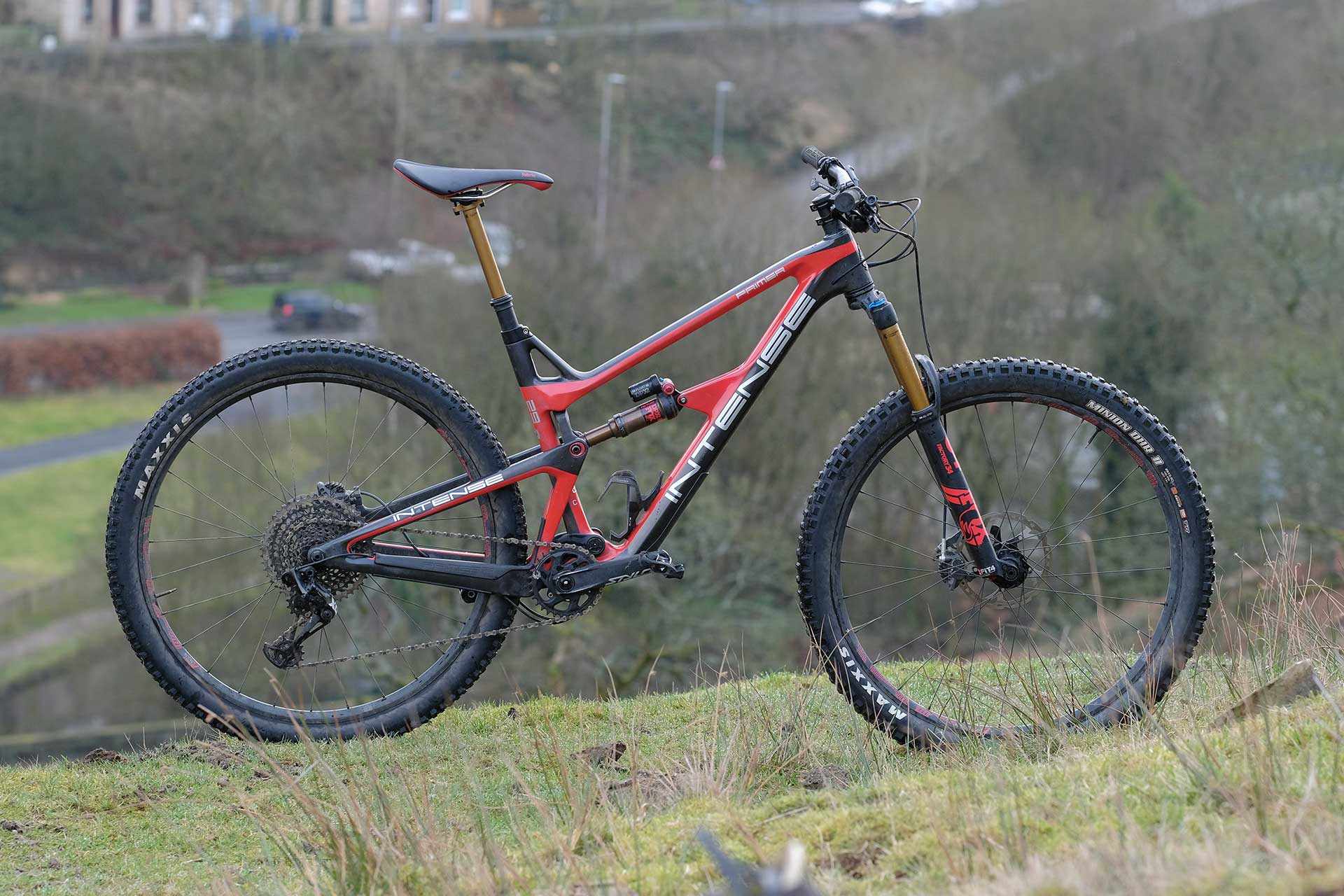
I could understand his surprise. It’s not usually the done thing to ride an XC endurance race on a bike that’s looks more at home at an enduro or uplift session, but there was a method to the madness. For a start due to my larger than normal condition, racing wasn’t really on the menu, so we’d agreed instead to have ‘fun’, hopefully of the type 1 kind rather than the usual type 2 ‘one week later once the arse scabs have healed’ sort of fun.
Secondly I also had a bike to test, and one that if you believed the marketing blurb, was a ‘Quiver Killer’ (where do they get these names from?), a one bike to replace them all, do everything all-round super-machine. So where better to test such a bike than a ten hour XC race (and a very good, extremely well organised one at that!)? Also three weeks after this, in order to test the other end of the spectrum, I’d be back for the Kirroughtree round of the PMBA Enduro series where it would be put through an entirely different set of requirements.
The Bike
The Intense Primer sits slap bang in the middle of the Intense range, targeted squarely at the trail riding crowd who may do some riding outside their comfort zone, but don’t want a garage full of bikes and a massive hole in their bank balance in order to suit every niche. That being said though, if XC racing is your thing then the super-fast Sniper will be a better bet, and conversely the Tracer and Carbine will be of more interest to the Enduro types. In between those the Primer borrows elements from both, along with some options to best suit the preferences of the rider.
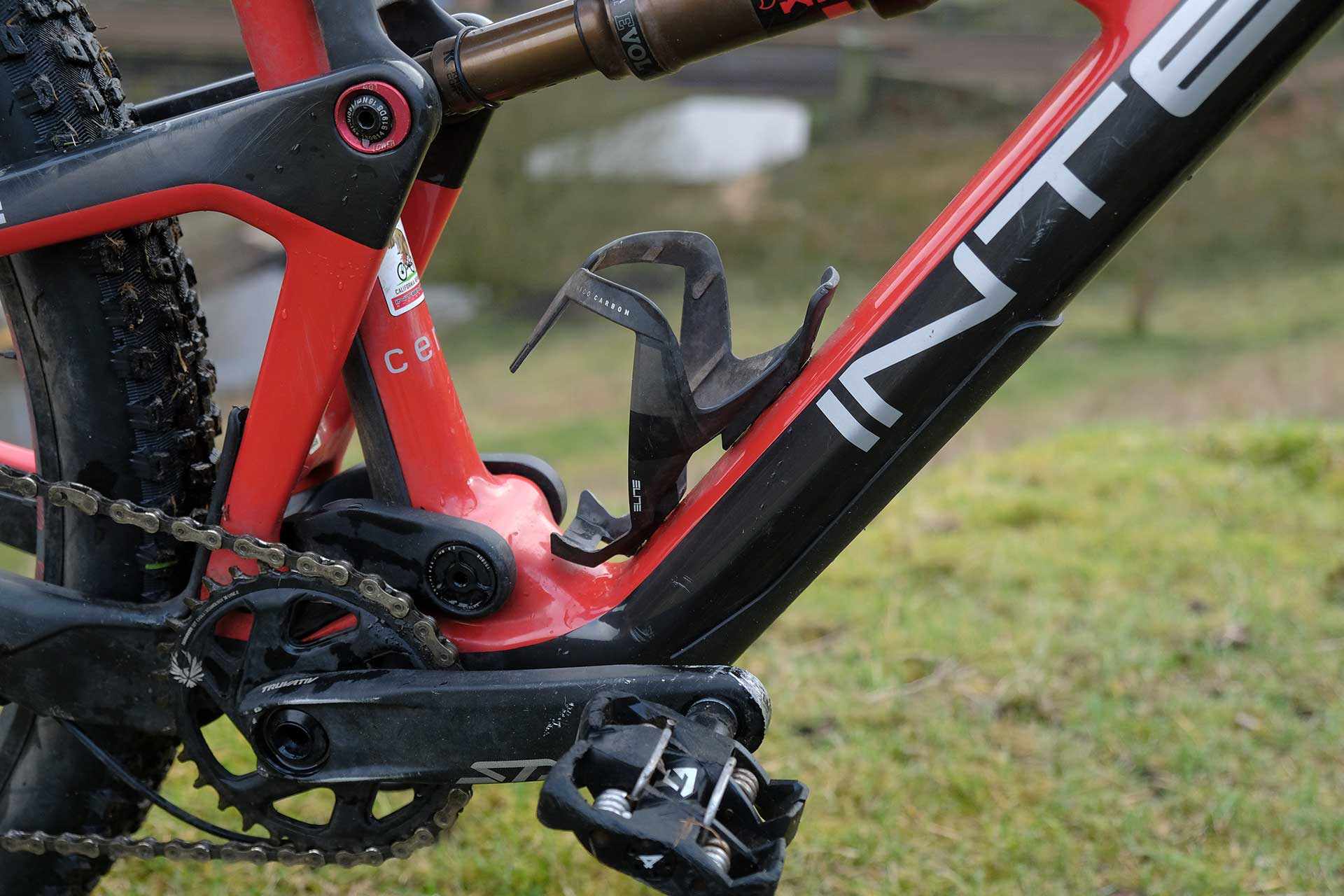
There are 3 models to choose from, with varying specs – Expert, Pro and Elite – to suit the thrifty and show-offs of this world. The differences between the models essentially boil down to wheel size. The 275 and 29 models sport wheel sizes suggested by the names, whilst the S model provides a ‘mullet’ option with a 29in on the front and a 27.5+ wheel at the rear (maybe it should have been called the M?). Interestingly, The S also comes with a Fox 36 fork as opposed to the 34 on the other two models. We shall come back to this minor detail later.
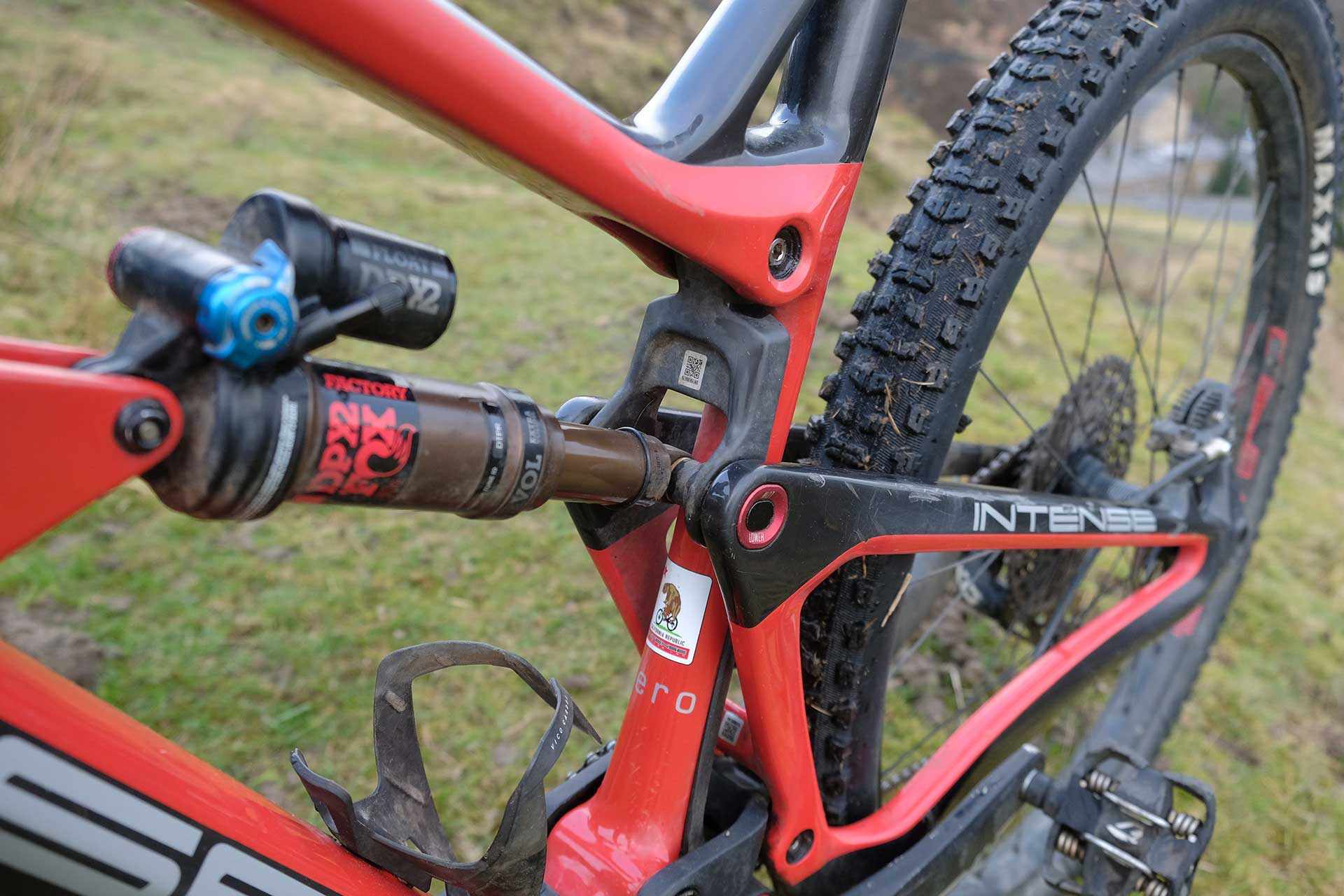
The carbon Primer frame has been designed from the ground up, and is the first Intense model to feature their new JS Trail Link, which reputedly combines the power delivery of the excellent XC link on the Sniper, with the mid-end travel of the Enduro link found on the Tracer, the aim being to provide an inbuilt pedalling platform without needing a lockout. Unlike most other frames with this linkage design, the top link inserts into the underside of the top tube rather than bolting to the outside, resulting in a very tidy aesthetic.
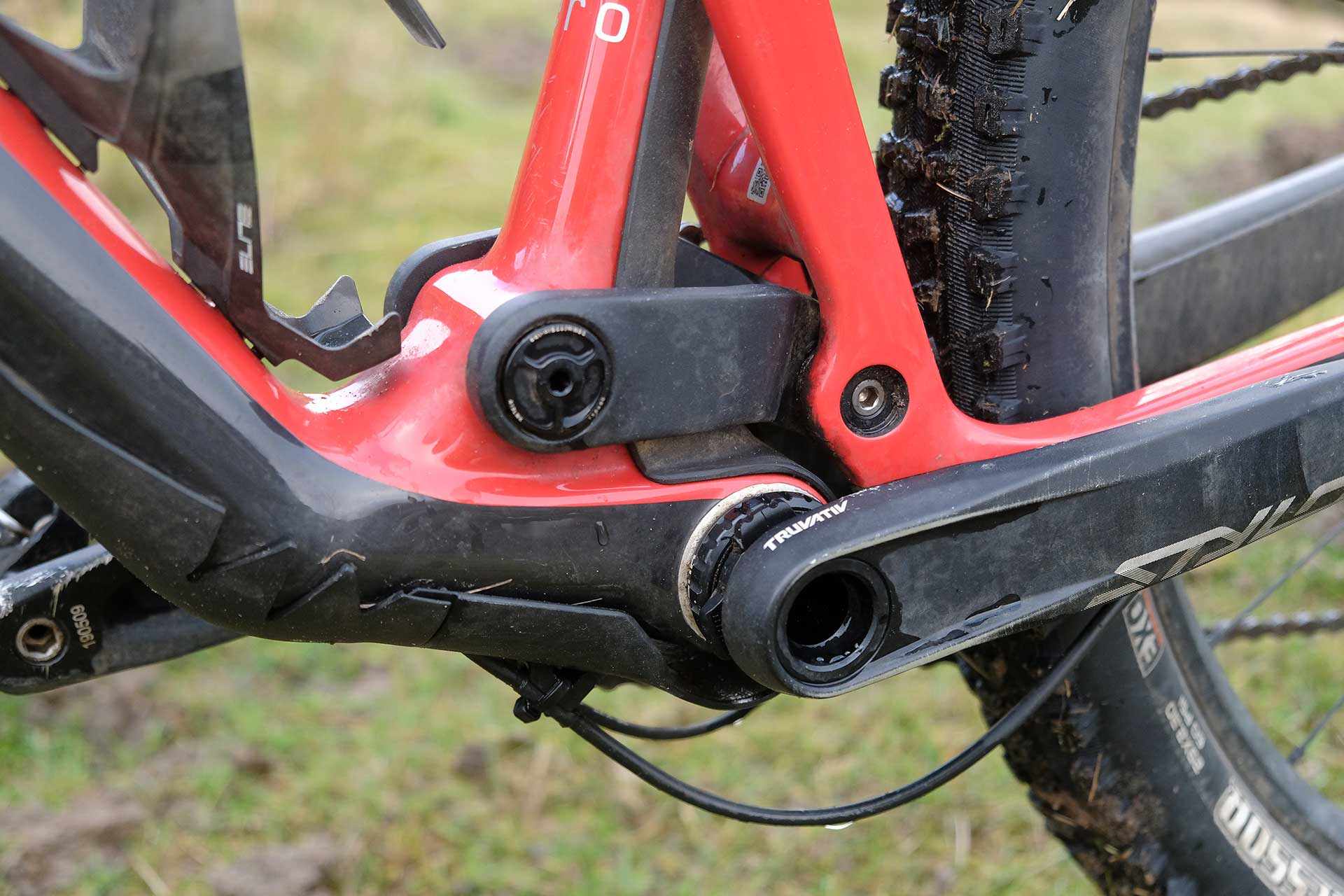
A major feature of the new Primer frame is the flip chip. Flip chips aren’t exactly a new thing, but instead of simply adjusting the geometry of the frame to suit different size wheels, Intense has utilised this to provide two different geometries and ride experiences. There’s no high and low though, just low, and lower, the latter option being very aptly named as it turns out. The chip also comes with a bold claim of being changeable within ‘a few seconds’, presumably hinting at the possibility of changing it mid-ride?
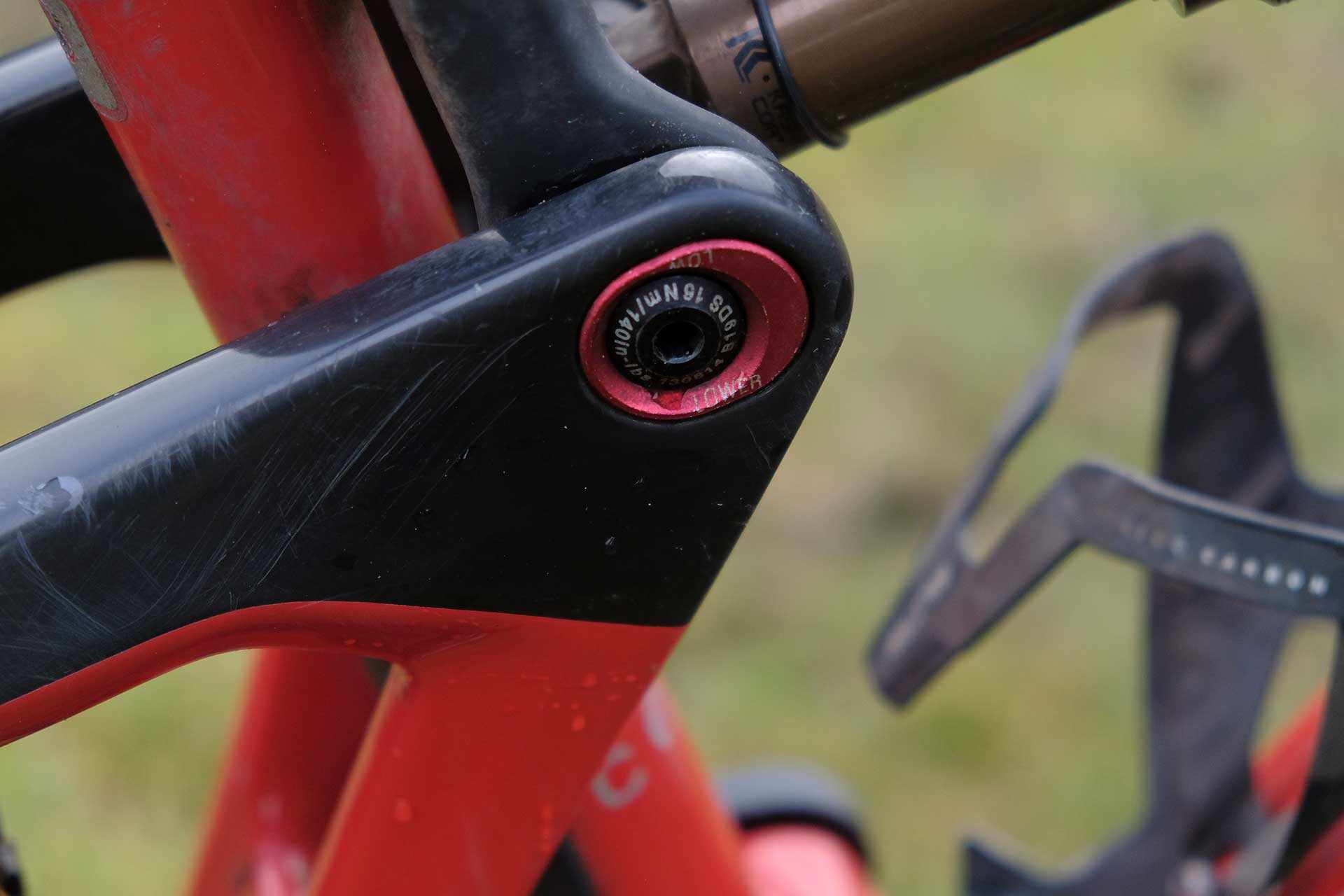
The variation in the geometry between the two flip-chip settings is not insignificant. In development Intense labelled the lower setting as ‘UK’ due to our supposedly smoother and less technical trails. I’m not sure where they were riding, but it probably wasn’t Calderdale. The lower position drops the bottom bracket a significant 8mm, reduces the reach and slackens the head and seat angles, resulting in a geometry biased further towards aggressive descending than that provided by the higher ‘low’ (confusing much?) position.
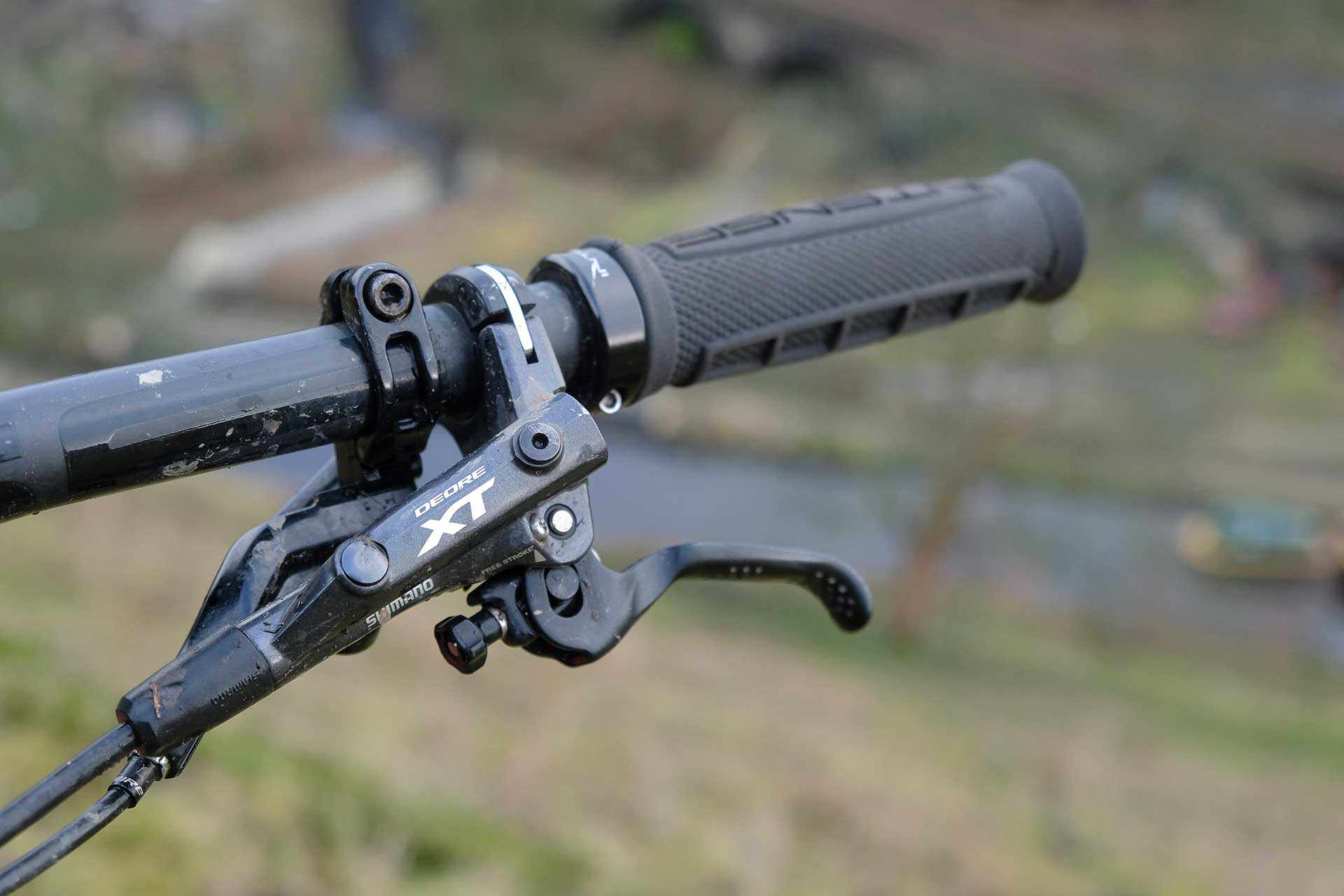
Suspension on the Primer 29 Pro is provided by 150mm Fox 34 forks, and a Fox DPX2 shock at the rear providing 140mm of travel, which combined with the aggressively low and slack geometry, along with the 2.5 Maxxis High Roller (front) and 2.3 Aggressor tyres (rear), is probably what raised a few eyebrows at the aforementioned XC race. The rest of the build consists of a SRAM GX Eagle drivetrain, Truvativ Stylo cranks, XT brakes and E-Thirteen LG1 Enduro Race wheels.
The Ride
Back to Kirroughtree. Lining up against the race whippets with my ex-whippet physique and inappropriate bike I’d be lying if I said I didn’t feel a little out of place. It’s bad enough being out of shape, but further compounding that with a bike that weighed about 10lbs more than anyone else’s seemed like lunacy. The plan was fairly simple, make progress on the fireroad climbs without blowing up, then nail the descents.
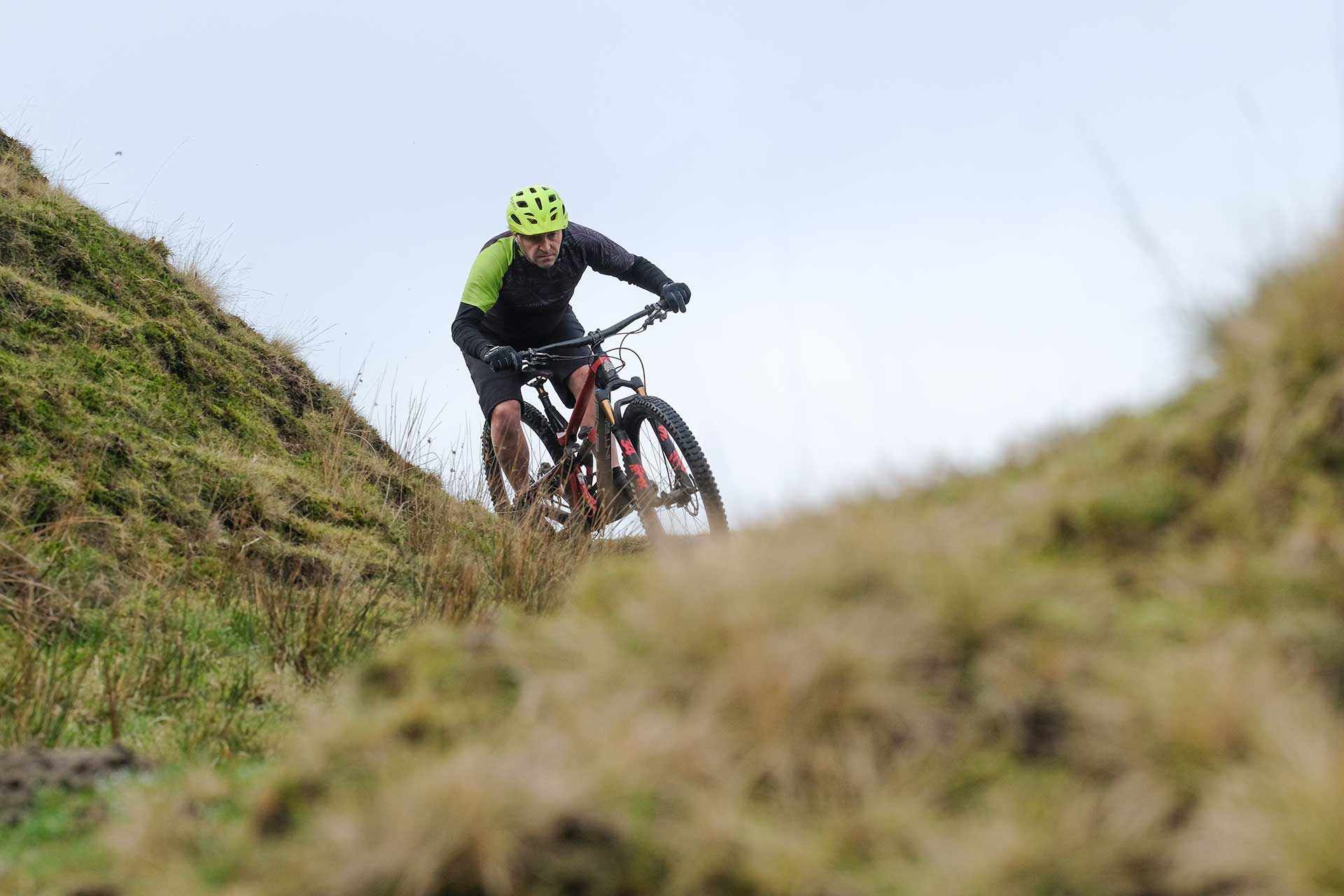
On first impressions the geometry and position on the Intense Primer is classically ‘trail’, especially in the lower chip setting. The slack head angle and 150mm forks result in the front wheel sitting way out front, which hints at this bike being one of those you have to winch, rather than power to the top of the hill.
When you do get going, it feels a bit draggy due to the less than sprightly tyres, and the front end has a tendency to wander, but surprisingly, and with some relief, it pedals and climbs very comfortably and efficiently for a bike at this weight and with this geometry. This is no doubt a result of the lessons learnt from the success of the Sniper’s suspension setup.
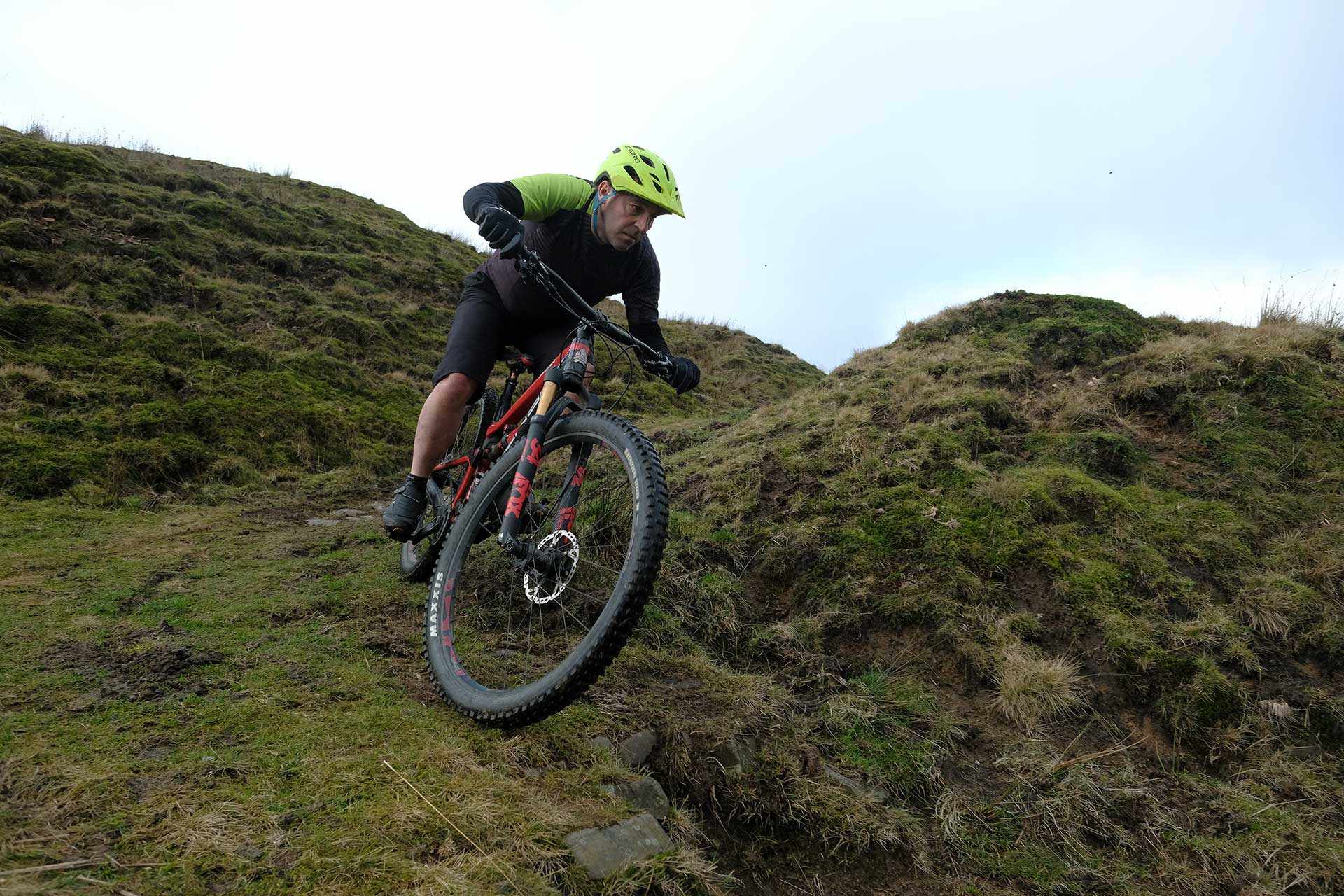
To get the best out of it you need the DPX2 shock to be in the locked position, but this still allows a small amount of flex to cushion any bumps. When fully open there’s still only a small amount of pedal bounce, even when grinding the gears out the saddle. The middle position provides a compromise between the two, and is particularly useful on more technical terrain when grip is at a premium and power needs to be maintained.
When the gradient reverses, the speed handicap the Intense Primer exhibits on the climbs due to its heft is more than repaid. The Fox 34 forks and DPX2 shock, along with the low and aggressive geometry – especially in the lower mode – combine to provide an extremely confidence inspiring, almost care-free approach to descending. The shock in particular was stubbornly resistant to bottoming out despite running it at progressively larger amounts of sag.

The end result of the combination of more than capable climbing ability and fast as you like descending were lap times at the 10@Kirroughtree race almost equal to my pairs partner who was riding a brand new, super-light and super-bling race machine. I had no idea you could make up so much time at these events simply by having a bike that can ride downhill as aggressively as you dare. My days of riding steep head-angled carbon hardtails would appear to be over.
Three weeks later at the PMBA Enduro (another great event BTW!), The descending prowess of the Primer was again in evidence. This time on some of the scariest and steepest trails I’ve ridden. I’m no enduro rider, as I found out when I was quickly overtaken by a teenager on the first timed descent, but with the Intense Primer some descents which would usually have me thinking twice were dispatched with a minimum of drama.
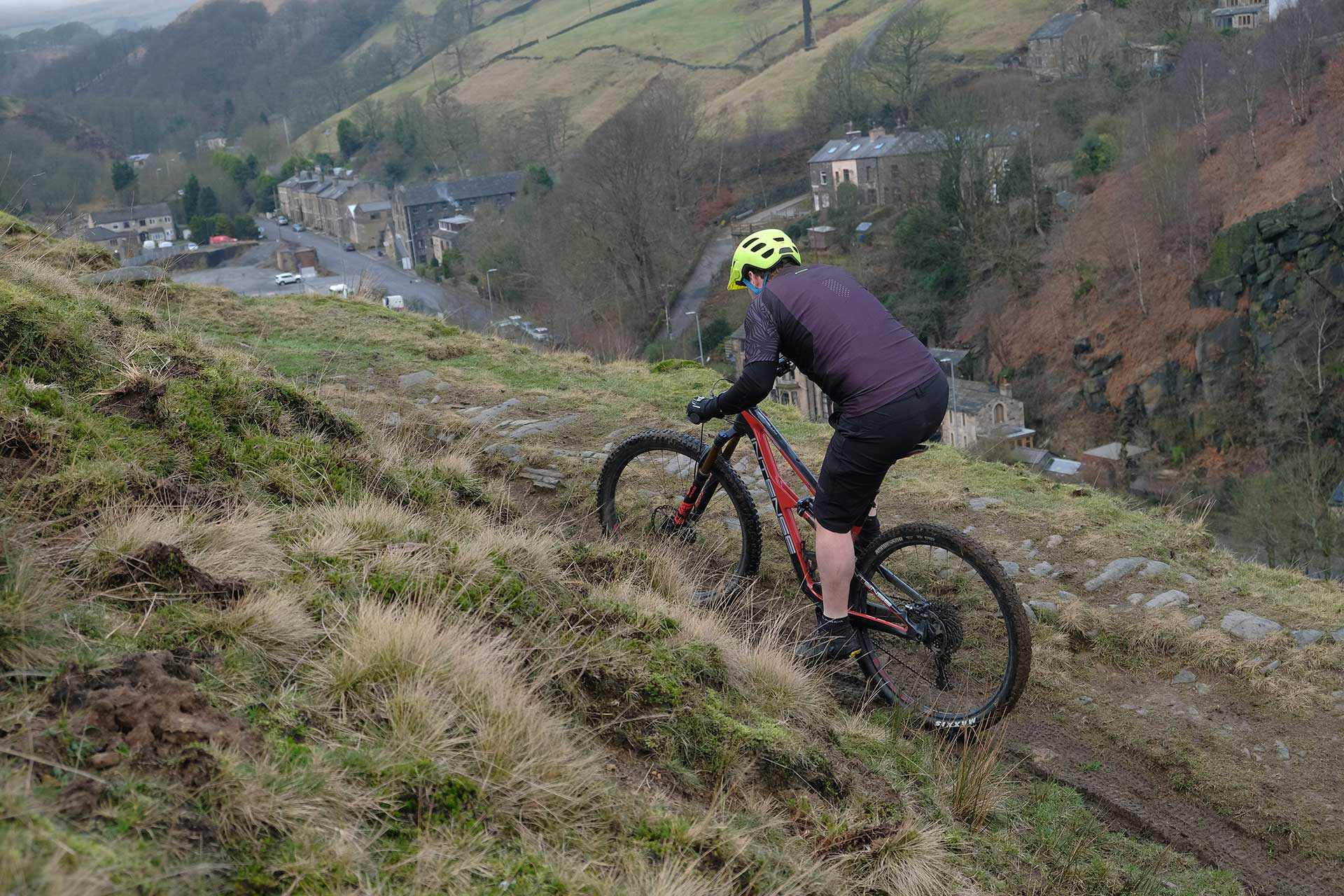
It should be noted though that the Intense Primer is quite the battering ram due to its burliness. Technique and finesse take a back seat to thuggish brutality, whilst tight twisty terrain requires quite a bit of manhandling of the bike and an aggressive intent when cornering. The confidence it inspires is justified, but it could also get you into trouble if you don’t pay attention and exercise a little respect.
One issue that was immediately apparent, at least whilst in the lower flip-chip configuration, was the frequency of pedal strikes. This is fine for trail centres but on more technical or natural terrain like we have here in Calderdale you need to keep the shock locked to prevent the sag lowering the bottom bracket further. Or you could flip the chip into the low position which reduces, but doesn’t eliminate the pedal strikes. Even in the lower mode though you eventually get used to it, riding with an awareness of the topography of the terrain under the bike, which is no bad thing in my book, especially while climbing.
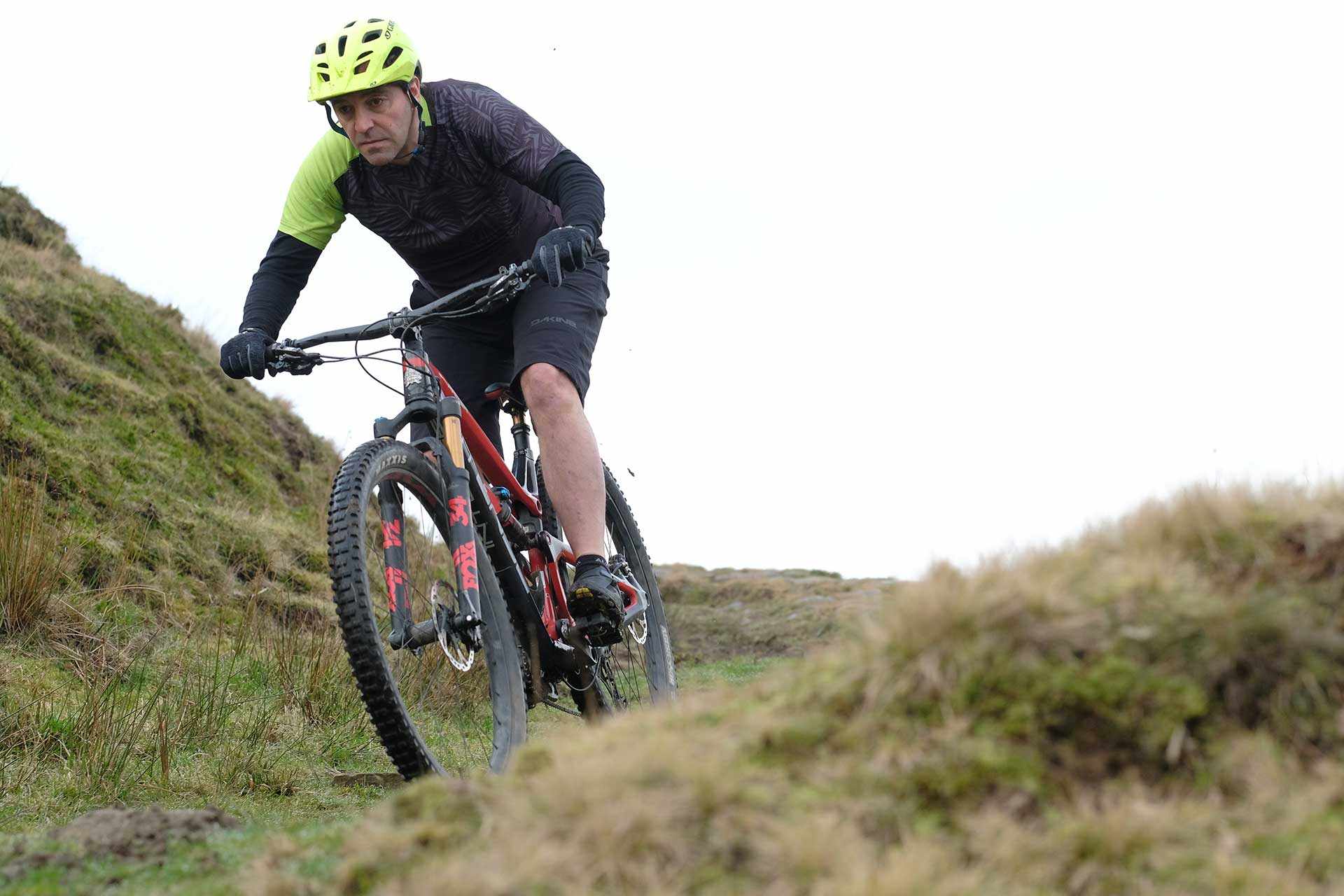
I never did manage to change the flip-chip over in a matter of seconds as suggested by Intense. I’m not the worst mechanic, but obviously didn’t find the magic formula, finding it stubbornly fiddly to undo, flip the chip and then put it back together without dropping the bushings, the chip itself or the bolt that fixes it. Aside from annoying your companions with unnecessary faffing, switching the chip out in the wild would come with a risk of losing some of the components which hold the whole bike together.
There was some debate at ST Towers as to whether this bike would be better with the beefier Fox 36 fork as exhibited on the S model. I guess it depends on which side of the XC/Trail/Enduro spectrum you come from. It goes without saying that the 36 fork would add further reassurance and scope for downhill aggression, but for someone coming from an XC background, the 34 easily provides enough stiffness and assurance to make the choice academic. If you can honestly say that your riding demands more though, then the S model might be a better bet.
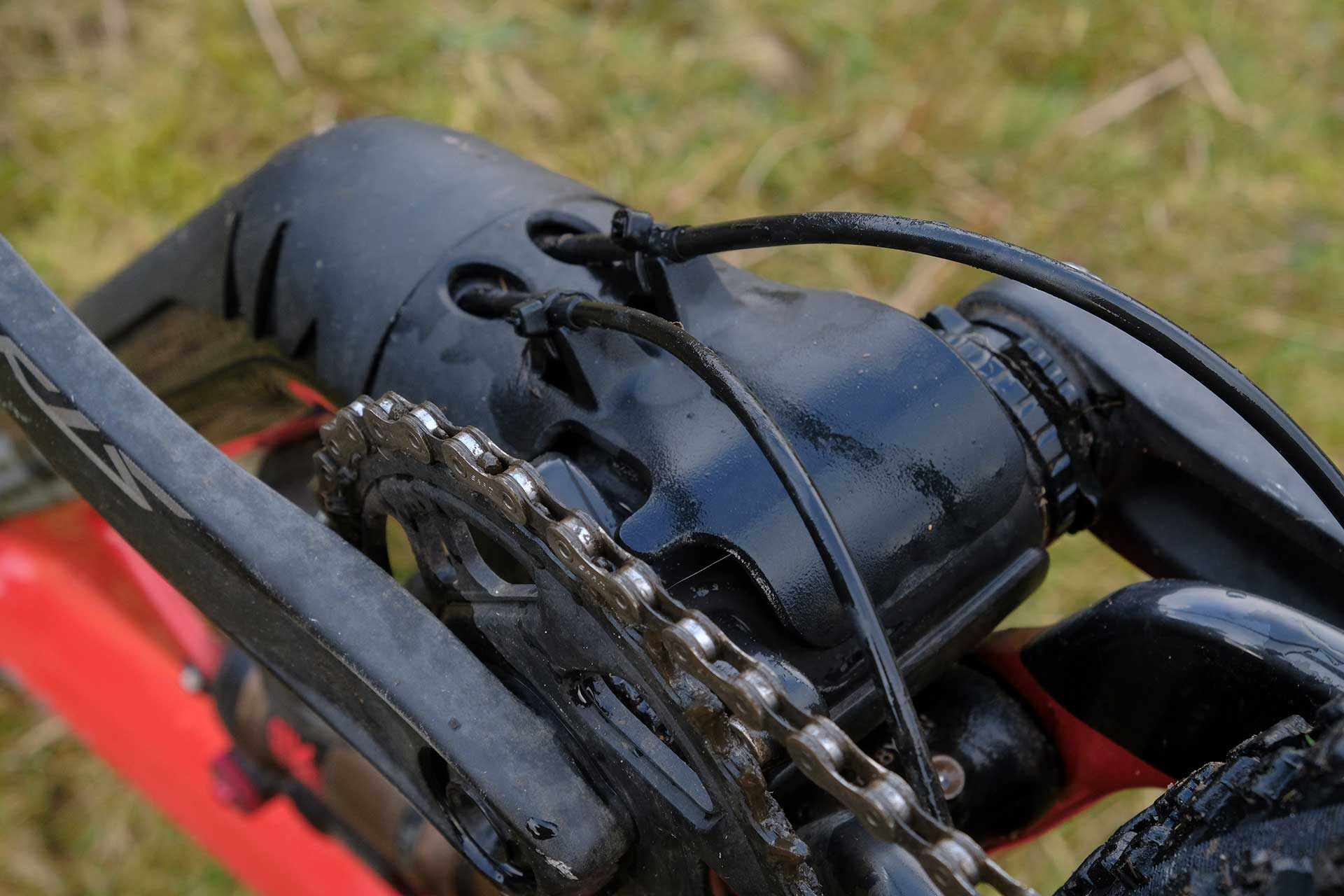
As you would hope of a bike with this price tag, the components have proven to be reliably resistant to both abuse and the elements. Given its propensity to encourage recklessness, you’re probably going to crash it, and I did more times than I’d normally find comfortable. The Intense Primer stood up to collisions with trees, being catapulted down hills and numerous interfaces with rocks, stone walls and various other trail furniture.
It also survived a particularly miserable Calderdale autumn and winter in pretty much full working order, with the only apparent damage from this onslaught being the plastic downtube protector working its way free from its attachment to the bottom bracket tube, although this didn’t affect the bike’s operation and it remained attached to the downtube.
Three things we liked:
- Pedalling performance of the suspension when fully open.
- The unbridled speed whilst descending and resultant absence of worry.
- The Fabric saddle. You can sit on it all day.
Three things we’d change:
- The rear Aggressor tyre. Not really suited to a UK winter.
- The XT brakes are adequate, but more power wouldn’t go amiss.
- More secure attachment of the downtube protector to the bottom bracket tube.
Overall
When I heard the phrase ‘Quiver Killer’ in relation to the Intense Primer I was initially sceptical. Surely a bike with this much suspension and aggressive geometry would primarily be of use when going downhill? Even if it could tick all the boxes and be the ultimate all-rounder, could it persuade the N+1 acolytes to dispense with their willy-waving propensity to have a garage full of bikes which they only ride a few times a year?
On the first question my first impressions were proved comprehensively wrong. For a bike targeted at trail riders, you really shouldn’t be able to (nearly) keep pace with XC riders on a standard endurance event lap. Not that I would advocate buying one for this purpose as there are many more trail capable XC machines more suitable for that. Instead the perfect environment for the Primer 29 Pro is events like the Dyfi Enduro, long days in The Lakes, or Alpine rides where there are no ski-lifts. Intense has managed to produce a bike which instead of compromising both downhill and uphill performance, effectively combines both in one package.
On the N+1 question, if you’re a full spectrum mountain biker (I can make up these daft names too) doing everything from xc to enduro with everything in between, multiple bikes will be preferable if you specialise in any or all of these disciplines. But for those of us who do lots of types of riding without being expert in any of them, and who like the idea of the N+1 dream but end up with a garage full of bikes in various states of disrepair, the Primer is an excellent candidate to solve that problem. How many bikes do you need anyway?
Intense Primer 29 Pro Specification
- Frame: Primer 29in carbon frame, carbon top link, Titanium hardware. 140mm travel.
- Fork: Fox Factory 34 / 150MM / Boost
- Shock: Fox Factory DPX2 / 210MM x 50MM
- Wheelset: E13 LG1 Enduro Race 30MM / Boost
- Rear mech: Sram X01 Eagle 12sp
- Shifter: Sram GX Eagle 12sp
- Crank: Tru-Vativ Stylo 6K Eagle 12sp / DUB / 32t / 170MM / Boost
- Cassette: Sram XG 1295 Eagle 12sp / 10-50t
- Brakes: Shimano XT M8020 Front / Shimano XT M8000 Rear
- Dropper: Fox Factory Transfer 31.6MM / 125MM SM / 150MM MD-LG / 175MM
- Bar: Intense Recon Carbon 780MM
- Stem: Intense Recon Elite 50MM
- Grips: Intense
- Seat: Fabric Scoop Radius Elite
- Weight: 29lbs 5oz (claimed, no pedals)
- Sizes: S/M/L/XL
- Price: £5,599
- Size tested: L (rider height 175cm)
- Test duration: 5 months
- From: Intense

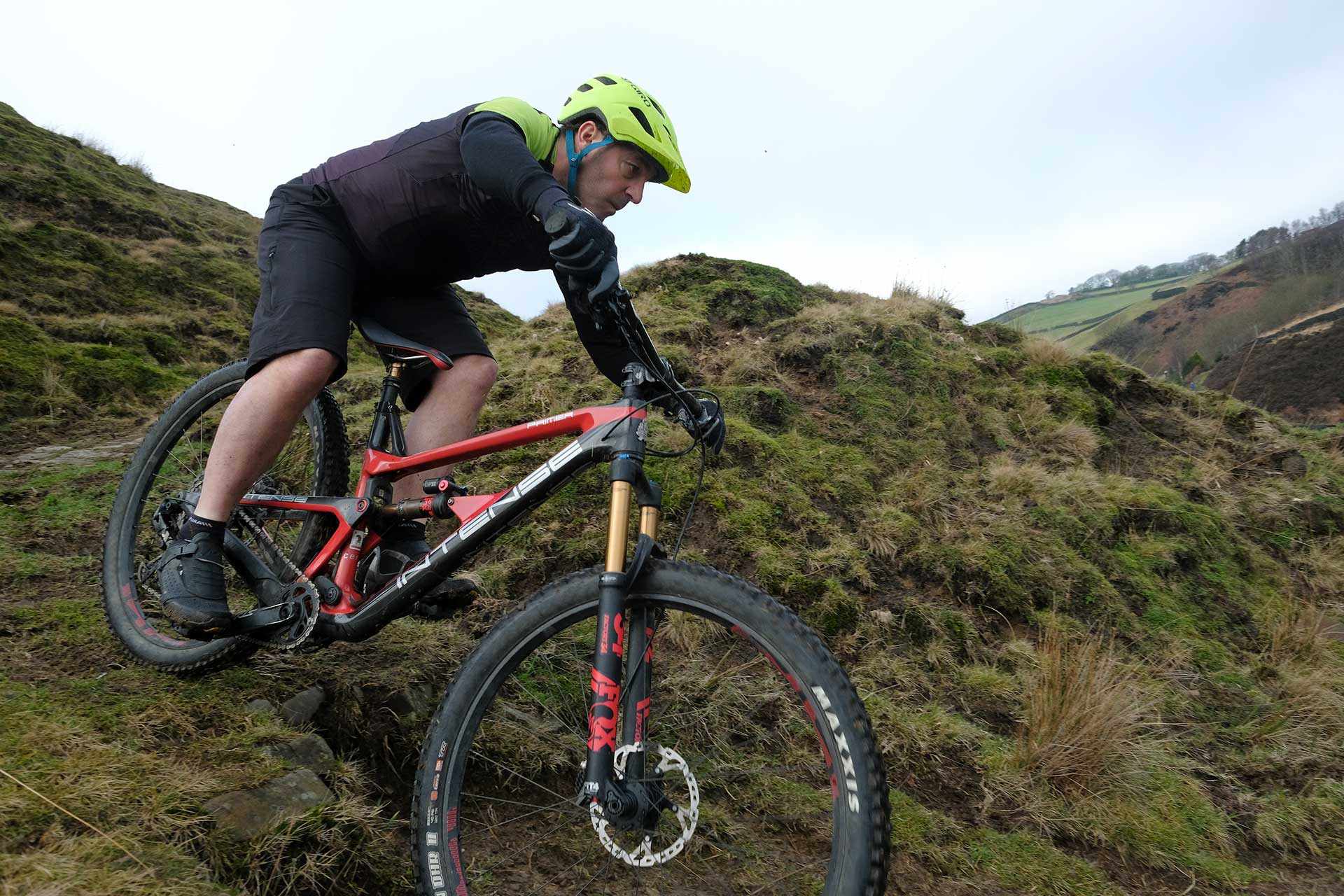




Bottom linkage looks like a perfect mud shelf.